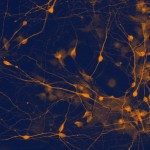Link to Pubmed [PMID] – 9773033
Rev. Neurol. (Paris) 1998 Feb;154(2):131-7
Transmissible non conventional agents are currently called “Prions”. This is not a neutral terminology: the attractive Prion hypothesis (the infectious agent being a protein able to replicate in the absence of DNA or RNA) due to Stanley Prusiner is the prevalent one, and has shown to be heuristic, but has not been formally proven and does not easily explain all the data, unless modified and expanded. No simple account has been given for the very unusual physical, chemical, and biological properties of non conventional agents. These infectious agents are associated with degenerative diseases of the nervous system that are either the consequence of a genetic mutation or develop spontaneously in apparently normal individuals, and then can be transmitted to various susceptible hosts, including man. Thus, non conventional agents cannot be considered only as fascinating biological enigmas. They constitute a challenge for public health. The changing characteristics of prion-associated diseases has led to a renewing of their clinical and neuropathological diagnostic criteria. A brief survey of the nosology and neuropathology of prions diseases, with emphasis on new data and on difficulties, is provided. A simple classification based on the familial, sporadic or infectious variety of the disease is suggested. Familial diseases can be named according to the genetic disorder. Sporadic and infectious diseases can be classified following the main clinical symptoms and signs, and the presence or absence of amyloid plaques in the brain, until new tools (analysis of the glycosylation pattern of PrP, strain recognition) allow a more precise nomenclature. The new epidemiology of Prion disorders allowed by these new approaches relies on a full study of Prion diseases affected patients, which necessarily involves their genetic study, and the analysis of brain tissue. This, for practical and ethical reasons, is better achieved by autopsy.
